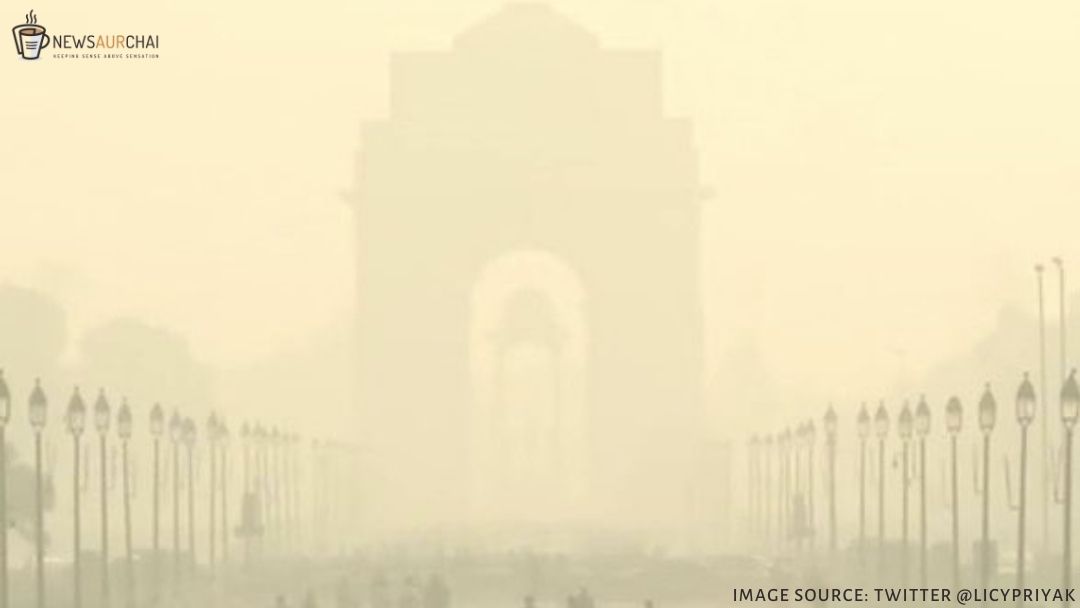
India’s dreaded pollution season is back as air quality in the capital city – Delhi, and other northern states rapidly deteriorated in the last two weeks. This is bad news for India, which currently stands second-highest in COVID-19 infected cases.
Every year in October, India, especially in and around the Delhi, air quality starts to drop, followed by a war of words between various parties accusing the ruling Government.
However, as India is fighting COVID-19, the battle has become more challenging with the rising pollution. Several international studies show a close link with the increasing air pollution to higher Covid-19 case numbers and deaths.
A Harvard University study shows that a slight increase of only one microgram per cubic metre in PM 2.5 – dangerous tiny pollutants in the air – is linked with an 8 per cent rise in the COVID-19 death rate. Another study by scientists at the University of Cambridge, UK also found a link between the severity of COVID-19 infection and long-term exposure to air pollutants, including nitrogen oxides and ground-level ozone from car exhaust fumes or burning of fossil fuels.
According to a BB report, Marco Travaglio, one of the co-authors of the study conducted by Cambridge said- “Such pollutants can also cause a persistent inflammatory response and increase the risk of infection by viruses that target the respiratory tract.”
The study compared the previous SARS outbreak back in 2003, where long-term exposure to air pollutants had a detrimental effect on the prognosis of SARS patients in China. Thus highlighting the importance of reducing air pollution for the protection of human health, both concerning the COVID-19 pandemic and beyond.
On October 15, when the Air Quality Index (AQI) touched very poor for the very first time this season, Union Environment Minister Prakash Javadekar said the contribution of stubble burning was only 4 per cent that day.
On October 19, as the AQI of capital city continued to remain in poor category, Delhi Environment Minister, Gopal Rai said, “We have implemented the odd-even scheme many times in Delhi.” He said it would be the “last resort” if the rest of the methods fail to curb the air pollution.
PM2.5 levels in Delhi have averaged around 180-300 micrograms per cubic metre in recent weeks – 12 times higher than the safe limit set by the World Health Organisation (WHO).
Doctors and epidemiologists have long warned that toxic air will only hamper India’s fight against the virus. However, there hasn’t been a single study conducted in India to examine the effect of air pollution on COVID-19 infection or recovery rates.
Currently, India has reported above 7.6 million infected cases with over 11, 500 deaths – making it the third-highest death toll in the world. As per experts, worsening air quality will likely increase these numbers.
Delhi, as on Monday, has reported 3.33 lakh infected cases, while the death toll mounted to 6,040, which makes the state among the top 10 with the highest number of coronavirus cases.
With Delhi already being one of the worst-hit states by the pandemic, the rising air pollution is a red flag for the residents, who are exposed to hazardous levels of air impurities for years.
The air is especially bad in winters, November to February, when several factors – farmers burning crop stubble to clear the fields, vehicular and industrial pollution, festive fireworks and low wind speed – contribute to what doctors say is a “deadly cocktail of poisonous gases.”
According to IQ Air, a Swiss air quality technology company, India stands 5th among the most polluted countries across the globe. Meanwhile, Ghaziabad, a satellite city of the capital New Delhi in northern Uttar Pradesh state, is ranked as the world’s most polluted city, with an average PM 2.5 concentration measurement of 110.2 in 2019. So, the study conducted by Harward is an alarm for the nation, which continually falls among the tops the list.
The researchers concluded that there was an urgent need to control air pollution in areas which are severely hit by COVID-19.
A spike in the severe cases can quickly overwhelm the healthcare system in India, and it will possibly further push the mortality rate up.
Recently Delhi Chief Minister Arvind Kejriwal also acknowledged that there was an urgent need to keep pollution levels in check, or else the capital will end up battling two health emergencies at the same time.
Studies have also shown that prolonged exposure to high levels of pollution worsens the condition of patients who have diabetes, hypertension, coronary disease and asthma. Moreover, it also weakens the immune system of healthy people, which in turn will lead to a rise in COVID-19 cases.
Experts say the pollutants could also aid the spread of coronavirus.
According to a report drafted by the National Centre for Disease Control (NCDC) under the supervision of Dr VK Paul, Chairman of NITI Aayog Member (Health) recommended Delhi Government to make arrangements for hospitalisation of about one-fifth of these patients with moderate and severe disease.
The report warned that Delhi needs to be prepared for about 15,000 new cases of COVID-19 per day taking into account the upcoming winter season-related respiratory problems, large influx of patients from outside and festive gatherings.
The stringent lockdown which was imposed in from March 25 due to COVID-19 had brought industries and traffic to a grinding halt allowing Delhites to breath fresh air most of the year.
Now, Government, especially in Delhi, needs to take immediate actions to curb down the air pollution; otherwise, India will witness a very dark winter this year.






One Comment